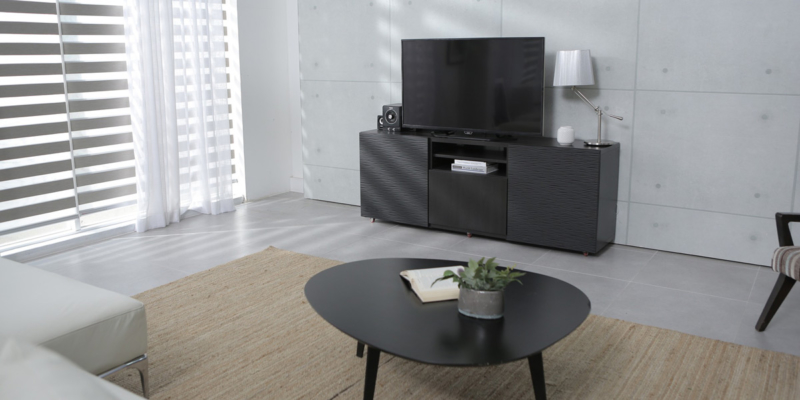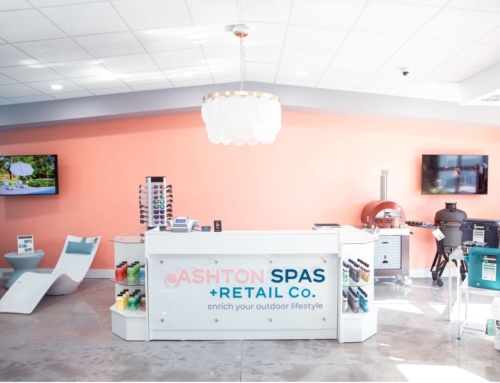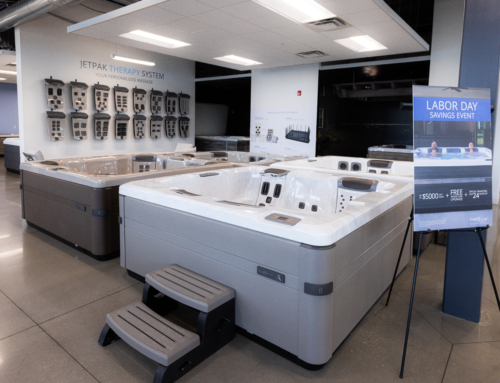In 2019, television is still an effective, albeit fluctuating, marketing medium for independent spa retailers. In order to take advantage of it, you need to go through the proper channels–in more than one sense of the word. Without further ado, here is your guide to efficient ad buying. Learn how to get the most return on investment with effective ad placement and branding strategies.
Getting Your Ad on the Air
Before you can air your TV spot, you need to work with an advertiser, typically an ad agency or the station itself. In these preliminary steps, you’ll need to decide when to air your ad, how often to air it, and how much you’re willing to spend. To get the best ROI out of your “ad flight,” or the timing strategy of your ad, use the following tips when placing your order.
Find the Right Station
Before bringing an advertiser on board, do your due diligence. Acquire each station’s rate card to compare prices between time slots and frequency. Frequency does not mean the number of times your ad airs, but the number of times an audience sees it. In general, you want a frequency of 2.0 or higher for the best ROI.
Advertising plays an essential role in maintaining your current customer base while defending against the competition.
The first step toward an effective TV spot is finding a suitable market to target. In order to make a strategic decision, you must evaluate your current demographic. For spa dealers, it typically encompasses homeowners between ages 35-46, though regional exceptions apply. Use market research to identify the media habits of your target demographic, including prime times and geographic viewership ratings.
Naturally, you want to gravitate toward a station that appeals to a similar consumer base. Furthermore, bear in mind the difference between cable and broadcast networks. Typically, you purchase broadcast airtime through the local station rep; whereas cable, you buy through local cable provider.
Negotiate the Placement Schedule
After choosing your advertiser, you need to negotiate a placement schedule within your allotted budget. A multi-step process, you will face a series of decisions that affect the cost and effectiveness of your marketing campaign. Always go into negotiations with a pre-determined budget and stick to it.
When scheduling, keep in mind that some programming and time slots are more expensive than others. For instance, advertising during evening news programming, which reaches a high portion the hot tub market, is costlier than during weekday afternoon talk shows. However, there’s more value in peak viewership than in less expensive time slots.
Brand building is also an important part of an advertising campaign. Consistent scheduling—i.e., airing on the same days, in the same time slots, and during the same programming—leaves multiple impressions on the same audience, reinforcing your brand and message.
Many stations offer an annual agreement, which often includes wholesale rates and better frequency levels. Though an annual contract is more expensive than a single ad flight, it costs less per airing. When opting into a long-term placement schedule, you have a better opportunity to establish brand awareness to a wider audience. Most agreements include a two-week advanced “bailout” clause should the campaign fall short.
Growth depends on reaching the customers you didn’t know you needed before your competitor does.
Be wary of so-called placement “packages” that offer extra exposure. More often than not, stations offer these to fill low-value time slots they can’t sell to others. Before agreeing to any schedule, check the station’s placement proposal for rate accuracy, and don’t be afraid to voice your concerns.
Confirm Your Order
Once you’ve agreed to a proposal, you need to fill out and submit the Insertion Order, which the advertiser will provide to you. The last step before your ad airs, the IO confirms all the details of your ad flight:
- Start and end date
- Time slots
- Frequency and total number of airings
- Media format and length
- Cost per spot
- Total cost
Along with your IO, submit your “supers” (anything superimposed over your ad including narration, logos, and text) and written voiceover copy. Provide exact time codes and instructions to ensure proper production. Most stations will have a digital dropbox to submit your media files. If not, transfer the files to DVD and deliver to station. Before your ad airs, you’ll receive an order confirmation. Occasionally, stations may ask for cash in advance or credit approval before your ad goes to air.
Follow Up after Ad Flight
After the campaign, ask for a detailed invoice before remitting payment. Make sure that your ad aired when it was supposed to and as often. If you discover any discrepancies, address them immediately to ensure any lost airtime is made up or reimbursed.
Gauging and Prolonging Campaign Success
The effects of an advertising campaign aren’t felt overnight. Driving sales is only part of the equation and often not the most valuable ROI. As far as value is concerned, brand building is far more significant. When evaluating the success of your campaign, consider what your marketing did to neutralize the competition’s branding efforts and to protect your reputation. In other words, a TV campaign could result in a marketing “draw” and still be effective.
Understand the Numbers
Don’t be shocked when your ad airs and there’s no change in sales. Important to note, when sales are flat, you are not losing business. Actually, flat sales are an encouraging sign that your advertising is working. Your marketing is neutralizing attempts from the competition to poach your customers, helping you retain your current base. In other words, had you not run the ad, you’d have risked losing customers.
Hence, sales are not the best metric of a successful ad spot, especially in the short term. In fact, most advertising returns materialize long after the ad flight ends in a carryover effect that impacts your future campaigns. With each successful flight, you build brand legacy, which helps future marketing efforts reach wider audiences.
Promote with Consistency
Above all else, consistency is the most effective brand-building strategy. The goal of marketing, after all, is to drive consumers toward your business through brand familiarity—and the process is gradual. Over time, you build up “mental availability,” or awareness, through a consistent marketing message and medium.
Consistent scheduling leaves multiple impressions on the same audience, reinforcing your brand and message.
For many independent spa businesses, running consistent marketing media throughout the year keeps your message relevant in the consumer consciousness. Marketing memory is short-lived; once an ad stops running, the public moves on to the next message. Worse is when your competition gains an edge in your lapse. TV advertising is an efficient way to sustain brand relevance while keeping your competitor’s message at bay.
Adapt to Change
More importantly, businesses won’t reach new customers if they never change course. Consumer needs and viewing habits shift over time; yet, to continue to grow your business, you need to reach new audiences. Furthermore, what you’ve done in the past is not always an indication of what will work in the future.
Few (if any) spa retailers can close sales on brand-awareness alone. Both new returning and customers need a reason to purchase from you. When putting together marketing materials, identify the points that separate you from the competition—this is your message. This can include pricing incentives, exclusive warranties, financing options—anything your customers value that the other guy doesn’t offer.
With each subsequent ad run, broaden the scope of your brand message. Growth depends on reaching the customers you didn’t know you needed before your competitor does.
Recognize the Cost of Doing Business
Too many businesses view their advertising budgets as extraneous costs. In reality, they should be considered overhead expenses. Marketing is all a part of doing business—the sooner businesses realize this, the better off they are.
No retailer is spared from competition. And in a zero-sum industry, every customer not shopping at your competitor’s is a win for your business. Advertising, therefore, plays an essential role in maintaining your current customer base while defending against the competition. In this sense, marketing is just another operating cost, like keeping the lights on.
Avoid Common Advertising Mistakes
Even savvy marketers make mistakes. Here are a few common missteps to avoid before running your next campaign:
- Don’t assume viewer habits. In other words, don’t assume other people consume media as you do. Avoid making preconceptions about the viewing habits of your audience and stick with the research. Intentional or not, when you project bias into placement scheduling, you risk missing your demographic entirely.
- Don’t be exclusive. Effective ads reach the widest audience possible. A campaign based on gender or cultural stereotypes can rule out a connection with a large swath of your audience. A strong ad promotes inclusivity and encourages more engagement from a larger demographic.
- Don’t over-target. Along the same lines as inclusivity, don’t over-target your demographic. While some targeting is good (you do want to reach an appropriate audience), too much can diminish your advertising efforts.
TV advertising is a necessary cost of competition. It keeps your brand relevant and builds an audience over time. While no single campaign is likely to make or break your business, consistent, brand-focused marketing sustains it in the long run.









Leave A Comment